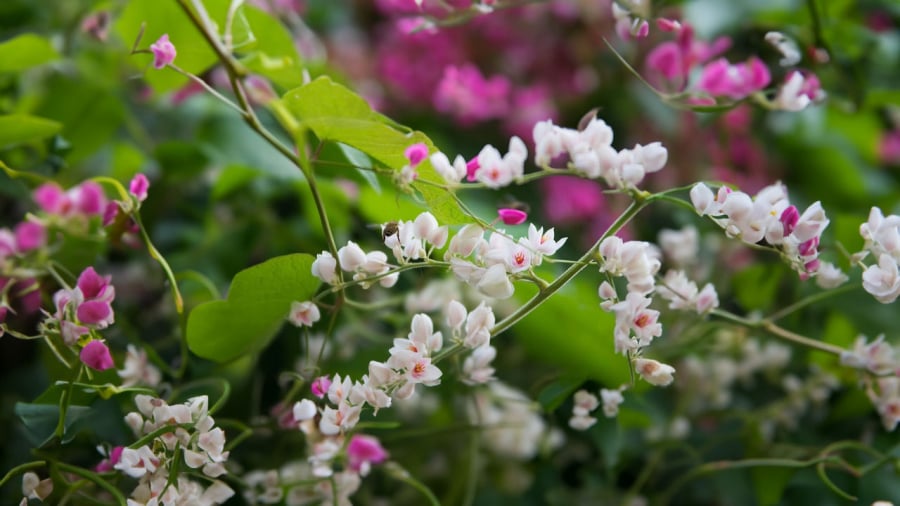Tigon flower is considered by many to be a beautiful flower, small and delicate but associated with a sad love story. This flower originates from Mexico along with the story of a girl named Tigon. The flower also carries a bright heart shape but it breaks.
Does the tigon flower (tigon) only symbolize sadness?
When imported to Vietnam, the tigon still carries the romantic sadness of a heartbreaking love story. However, in addition to that, the tigon in Vietnam has many other meanings. The tigon flower has many colors, each color has a different meaning:

White tigon: Symbolizes purity and innocence
Pink tigon: The tigon flower expresses love and shows your precious love for others. The tigon flower also brings a feeling of longing and emotional impact.
Red tigon: This flower symbolizes burning passion, intense love. In some Western cultures, red tigon flowers also symbolize true love.
If you want to grow tigon flowers according to destiny, you can choose the corresponding colors. White tigon flowers are suitable for people with the Metal destiny, pink and red tigon flowers are suitable for people with the Earth and Fire destiny.

Should I plant tigon flowers indoors?
Tigon flowers are easy to grow, they are climbing plants, tigon flowers grow in clusters and are very beautiful and striking. They bloom a lot and create a radiant beauty when grown as climbing vines. Tigon flowers are easy to grow and often bloom all year round, so they are very popular for planting as ornamental plants. In terms of medicine, tigon flowers are also used as herbal tea to reduce inflammation, relieve pain, prevent colds, and support the treatment of diabetes. Tigon flowers prefer warm climates and plenty of light.
Therefore, you should plant tigon flowers in bright places such as balconies, rooftops, fences, or arches, they are all very beautiful. You can plant them in front or around the walls surrounding the house.
For young couples, families with daughters, growing tigon flowers in the courtyard attracts complete and fulfilling love, increasing happiness. According to many people, people born in the Year of the Pig are very suitable for growing tigon flowers in the courtyard, creating a peaceful and warm family life.

How to plant tigon flowers
You can propagate tigon flowers by cuttings or seeds. But cuttings will be faster than seeds.
Planting soil: Tigon flowers are not picky about soil but you should choose fertile and porous soil.
Light: Tigon flowers need light to bloom and photosynthesize. Lack of light will affect the leaves and prevent flowering. When newly planted, you should limit direct sunlight, when the plant matures and starts to bloom it needs more light.
Watering: Tigon flowers do not like waterlogged soil but need to be watered daily.
Fertilizer: Since tigon flowers grow as climbing vines, you should fertilize them every 2 weeks with synthetic fertilizer to promote plant growth and flowering, avoid fertilizing during noon, and fertilize away from the base of the plant.
Pruning: Tigon flowers bloom all year round but they bloom most beautifully in summer and spring. You should prune old and withered branches to promote the growth of new leaves and more branches, making the flowers bloom evenly and more beautifully.
Tigon flowers, when planted with multiple colors, create a colorful and romantic space and do not inhibit the destiny of family members. When planting tigon flowers, you should note to build the trellis and pay attention to make them good for flowers but not too dense as it may become a place for snakes, insects, and mosquitoes. When the flower trellis is in an archway, pay attention to avoid low trellises obstructing the passage.



































